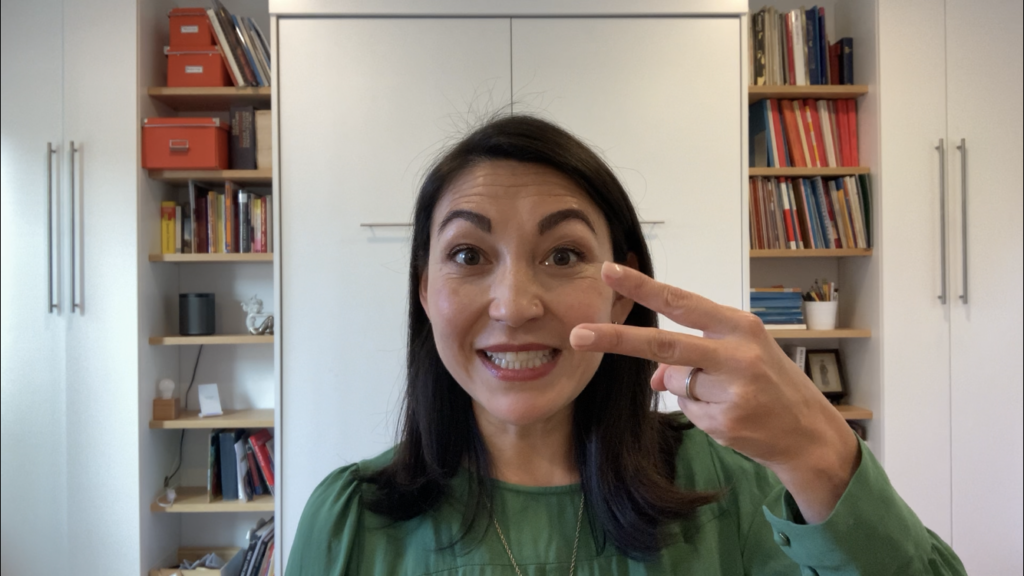Are you chewing your consonants? Today’s jaw release exercise helps you make clear consonants without creating tension in the jaw.
I know I often encourage you to “dig in” or “engage” your consonants, but that engagement needs to be created by real vibration, not by clenching in the jaw.
Did you know that the average human jaw has a bite strength of 162 psi? That is more than you need to make an “S” sound!
In order to balance clear, resonant engagement with jaw release, I like to think about an idea Thomas Hampson used to throw out in masterclasses – the idea of 2 mouths.
Hampson suggested that we think of the mouth as two independent openings: the front “mouth”, where the lips and teeth are, and the “back mouth” where the jaw hinges and the throat meets the mouth.
The front mouth is where the consonants are created. This one should be ACTIVE during singing, with the lips and teeth clearly and quickly moving to create consonants.
The second mouth should stay OPEN and LOOSE, with the jaw dropping vertically down in its joint, not forcing open to a snake jaw position.
If you think about the two mouths, you’ll be able to feel that the mouth is defaulting to an open, loose position, like you’re spacing out in front of the TV, with the articulators in the front moving into action quickly and then releasing, not holding tension between consonants.
Today’s exercise is great for experimenting with this independent action of the front and back mouths. Let’s try it!
How to do the My My My My My:
- Start by making an “MMM” sound. Notice that the lips must make contact with one another. The buzz of the M vowel comes from that contact between the lips, so check in with your jaw and be sure it’s not holding any unnecessary tension.
- Now, we’re going to flap the jaw up and down loosely, like a ventriloquist’s dummy. Each time the lips come together, an M will sound, but the jaw will then drop back down. Try to mimic the action of a plumber’s wrench, not a pair of scissors.
- Now, sing down a five note scale on My My My My My, feeling that looseness and drop in the jaw, and also the buzz on each consonant in the lips.
This exercise can’t happen without a lively breath to help you buzz those M’s, so you might want to start with a few false starts on “HMMM” to feel those low belly muscles zing on.
Did you try the My My My My My Exercise? Let me know! And thanks for practicing.


